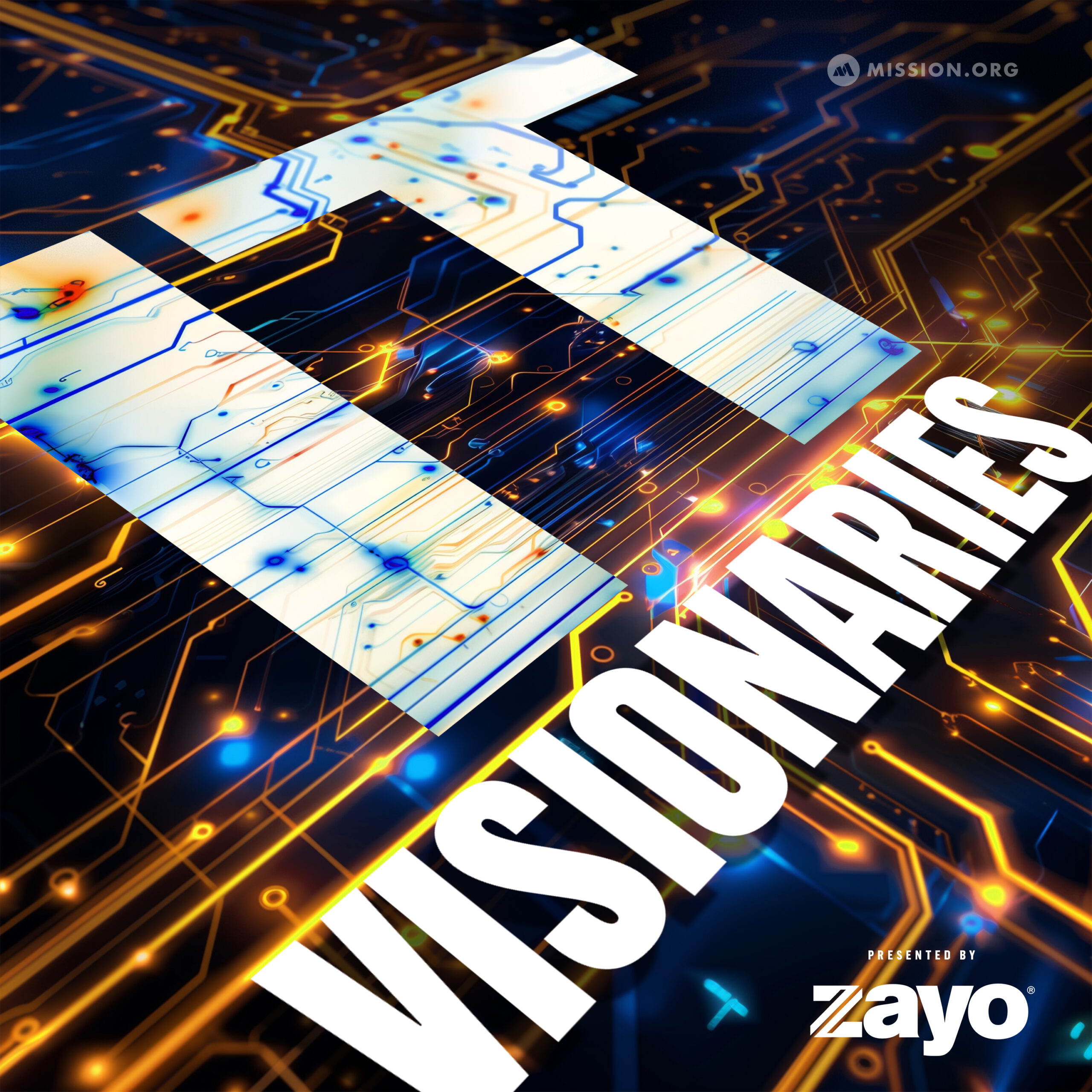Or listen in your favorite podcast app
Apple Podcasts / Google Podcasts / Spotify
For much of his life, Allen Shaheen had no desire for a career in the technology industry. But as time passed — and thanks to some helpful nudges from his parents — much like peanut butter and jelly, Allen and technology naturally gravitated toward one another. Today Allen serves as the Executive Vice President of Digital Engineering at Cognizant, a company he has been with for almost 15 years. On this episode of IT Visionaries, Allen talks about his evolving relationship with technology, how companies are adapting to and embracing technology more than ever, and why reinvesting in STEM programs is the only way to ensure a prosperous future.
3 Key Takeaways
- Companies that don’t have a digital footprint, need to change their business model
- STEM programs are a necessity to continue to fuel technology advancements
- Products do not need to be perfect before it gets to the user. Speed and dynamic feedback are what matters
For a more in-depth look at this episode, check out the article below.
—–
Allen Shaheen didn’t seek out a career in technology. However, much like any great relationship, the two naturally gravitated toward each other. Today, Shaheen serves as the Executive Vice President of Digital Engineering at Cognizant, a company he’s helped steward for more than a decade. Shaheen joined IT Visionaries to discuss how Cognizant is helping organizations adapt to the new virtual norm, the growing focus on STEM programs, and why companies have an obligation to serve their local communities.
As companies race to alter their market strategies and corporate structure due to the global pandemic, many of those organizations are seeking Cognizant and Shaheen’s advice, so we wanted to start there, too. With the rising need for virtual workspace and digital infrastructure, this is where Shaheen and his team excel.
“Right now, companies are going through their projects with a fine-tooth comb just to see what they need to keep the business running,” Shaheen said. “You have to have a very different way of maintaining revenue and expanding revenue. You have to have a different way of fulfillment of managing your supply chains.”
So what are some of those philosophies? Shaheen said that while companies continue to analyze their projects and cut spending, the need for discretionary spending has never been more critical.
“If you are a retailer without an online presence, if you are a traditional retailer with an on-premises footprint only, then you’re in a very difficult position,” Shaheen said.
With the increase in online activity as more and more individuals abide by stay-at-home orders, Shaheen said their eCommerce clients have seen their online traffic rise by three times what it was a month ago, adding that number is three times what they see during their peak and holiday season.
So how do you do virtual sales? How do you do virtual fulfillment? Shaheen said that companies who think they are virtual, are having a harder time operating under the new circumstances than they thought.
“When you do global development or global product delivery, it’s often been through team-to-team connection,” Shaheen said. “Now we’re in a place where it’s very atomic, it’s person-to-person to make it work. And we’ve never really done that before at the scale that we’re seeing it now. So what we often do is help our clients figure out how it is that you create the infrastructure that supports that. And then how do you create the collaboration tools, the rituals, the processes that make that work?”
To help clients transition, Shaheen said there are a few simple processes that they should follow. The most important: maintaining the basic processes that were in place before, but doing them virtually.
“People just need to figure out, okay, what are the processes that we have from a collaboration standpoint?” Shaheen said. “You’ve got regular standup meetings, you’ve got regular communication meetings. They might have been done historically in direct person-to-person meetings or via teleconference. Well, now you’ve got to do them in video mode, but you keep them going. You don’t all of a sudden say, the world is different, so let’s stop doing our daily meetings. You do the daily meetings but in a different way.”
And working differently is what Cognizant is all about. Throughout his more than a decade of experience with Cognizant, Shaheen has helped steer the company from helping their clients shrink the denominator to helping them create opportunities. To incorporate this change, Cognizant altered its approach from a traditional business model toward a more digital presence. Now they build their services and talent models around guilds and communities, designed with the idea of innovation, creativity and experimentation.
“What we’ve done is looked at how you build the kind of IT projects and software products and detailing out what are those specific capabilities that you need, be it full stack engineers, be it architects, be it designers, et cetera, and we have reorganized ourselves into communities of these capabilities,” Shaheen said.
As Cognizant’s core beliefs changed, so too did ideas on creativity and innovation. What didn’t change though, was the company perspective on its sustainability mission. Shaheen argues that they still have an obligation to their community. As such, Cognizant focuses many of its efforts on STEM education and skills programs.
“If you look at the gap in talent in the United States today, there’s about 600,000 open jobs in technology that can’t be served.” Shaheen said. “That number is growing at a pace of probably a hundred thousand or more a year. We’ve come up with some very innovative ways to expand the technology gap. To get more and more people into technology from different communities. And what we find is amazing is there are these great sources of talent that have been fundamentally underrepresented because they’re just a little bit harder to access, or they don’t have the same knowledge of what opportunities are available and don’t have the doors open to them that others might.”
As Shaheen and Cognizant do their best to spur creativity and innovation, one of the biggest challenges in the space remains the relationship between the consumer and technology.
“Technology is not just this thing that’s out there that you have to deal with because you just do,” Shaheen said. “Technology is [not] this very mystical, difficult to use, difficult to understand thing that’s out there. People have now come to the belief that technology is fully integrated into what we do on a day to day basis.”
While the rush to virtual workspace eased some of the relationship tensions between the individual and technology, Shaheen said the biggest hurdle in that challenge occurred out of necessity; with innovation and the building of infrastructure that got great easy-to-use products into the hands of the individual. But the relationship will continue to evolve, and just as he has done for nearly 15 years already, Shaheen will help guide both sides of the relationship toward success.
—




